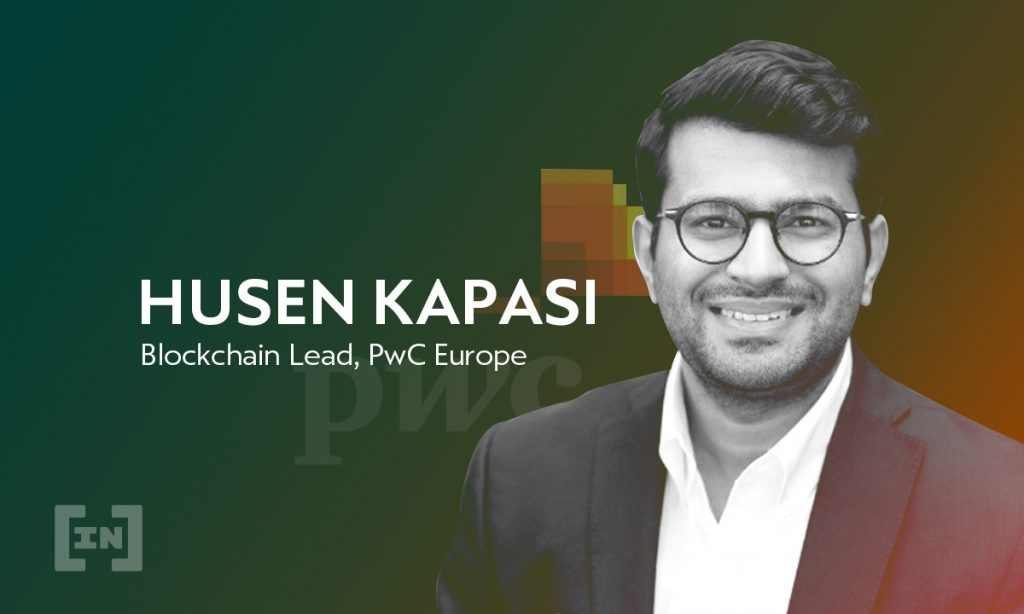‘Supply Chain Is the Killer Use Case of Blockchain,’ Says PwC’s Husen Kapasi

BeinCrypto spoke to Husen Kapasi, European Blockchain Lead at PwC. He went into his enthusiasm for blockchain and the potential of the technology.
Kapasi leads the blockchain community at PwC Europe with the aim of building a blockchain business portfolio, being thought leaders, and raising awareness of technology in PwC’s network companies in Europe.
“The blockchain world is mainly divided into two categories: Crypto & Enterprise Blockchain – Enterprise Blockchain has been my focus for three years.,” he explains.
“In the past, I’ve worked on various digital transformation projects and that’s how I came to blockchain. What drives me is the potential of the blockchain. My focus is on the combination of blockchain and supply chains.”
Kapasi came to blockchain technology easily. With a background in electrical engineering and an MBA, blockchain was a welcome medium for him.
“For me it came naturally. I worked on topics related to digital transformation. The problem of secure payment with intelligent devices arose. How do you guarantee that payments are safe and not hacked? That was a turning point for me and that’s how I got into the blockchain sector. I started exploring this world. And I think this is really changing the infrastructure of the companies and societies that are using the technology.”
Blockchain, the underlying technology for the supply chain
For Kapasi, blockchain technology forms the basis of emerging and future technologies.
“Emerging technologies like IoT and AI are the technologies where we interact one on one. However, blockchain is an underlying technology that is similar to the internet protocol, meaning it provides the backbone, but users don’t interact with it directly,” he says.
“However, the decentralized layers have the potential for big changes. The internet provides access to the information and blockchain brings the value of the information. This is the next path to transform many functions, businesses and society. This is just the beginning. And I’m excited to see what’s in store for us in the next ten years.”
Recently, he spoke at the #TimeforTrust conference on how blockchain will underpin the digital supply chain. The benefit of the blockchain for supply chains globally is a much-discussed topic with significant interest.
“The supply chain is the killer use case of blockchain with potential for various industries. That could also affect the trade finance and supply chain IT business. Perhaps in the near future you will be able to see all the relevant steps in the supply chain of a product on Amazon via information on the blockchain before you buy it.”
Blockchain is not the solution for everything
However, while blockchain may be the answer to some issues, Kapasi doesn’t believe it is the magic solution for everything.
“Blockchain doesn’t solve all problems when it comes to supply chains. The crucial point is also how we can combine blockchain with other technologies such as AI or analytics.”
“In many companies, small teams, such as the Blockchain Task Force, are already working on this topic. And there is a separate task force for IoT and other emerging technologies. But it’s all interconnected, not separate. This is the insight that many companies will be heading towards in the next few years,” he explains.
How companies go about utilizing blockchain relies on identifying the exact issue it aims to fix.
“In order to really get the most out of blockchain, you have to define your problem and the use of the blockchain. This is how you structure your architecture. For 2021, I assume that many companies in this area will grow and deal with the question of how blockchain can be implemented for high efficiency.”
Governance and monetization for the supply chain
For those that are wanting to delve into blockchain-powered supply chains, the next consideration is monetization.
“What is the value to the customer? That is another key question. Because without this, the entire operation makes no sense. The stakeholders also play an important role.”
“Many companies wonder how they and the surrounding network can monetize this area. Blockchain only makes sense if several companies are involved in providing information. It is therefore important to create appropriate incentives for the partners,” he says.
He explains that a reward mechanism could create this incentive.
“Last but not least, governance is how platforms and ecosystems are designed. Supply chain governance helps shape the ecosystem and blockchain governance is a key in shaping the platform.”
“Then there is blockchain governance itself. How do you shape it? Where are the nodes, who operates the nodes, who owns the nodes? What will the consensus mechanism look like and so on,” he says.
“There is no doubt that blockchain is mainstream, but all good things take time.”
For Kapasi, 2020 was the year of blockchain and the supply chain. In the future, he sees a whole host of integrations for blockchain in business.
This forecast includes:
Integration with emerging technologies like artificial intelligence. Increased interopertability for blockchain solutions and exisitng techniologies. A focus on monetization of blockchains for business. Improved shaping of blockchain and supply chain governance.
“There is no doubt that blockchain is mainstream, but all good things take time. It is interesting to compare the adoption patterns of blockchain and the internet. So we have a rough idea of how blockchain will develop. Blockchain takes time, but the foundation is being laid,” he says.
“For 2021, the question will be who are the leaders in this field. 2023 will be an important year for blockchain enforcement and by 2030 it will be an integral part of the IT architecture of many companies.”
Disclaimer
All the information contained on our website is published in good faith and for general information purposes only. Any action the reader takes upon the information found on our website is strictly at their own risk.













